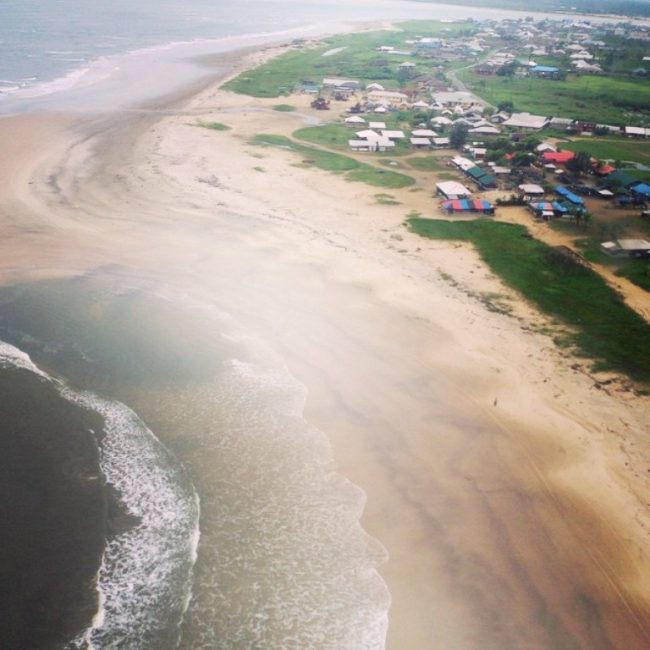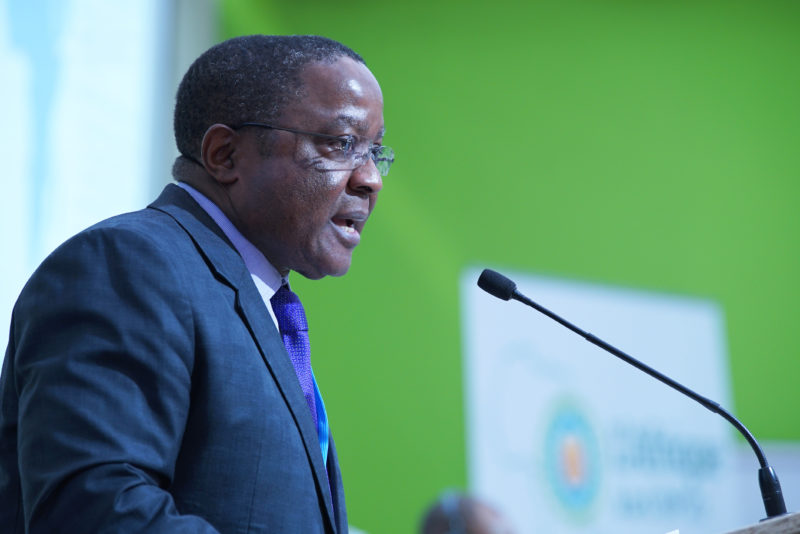During a panel discussion session at a side-event organised by the Akwa Ibom State Government during the UN climate change summit (COP22) that held recently in the Moroccan city of Marrakech, Johnson Nkem (Senior Climate Adaptation Expert, African Climate Policy Cantre, Special Initiatives Division) of the United Nations Economic Commission for Africa (UNECA), stressed that, besides the green/low carbon economy, Akwa Ibom State of Nigeria can explore inherent potentials by transiting to a blue economy courtesy of its vast coastline

There are three institutional tiers for the implementation of the Paris Agreement or Nationally Determined Communications (NDCs) in most countries. These include the national level, state/provincial level, and the sub-national levels.
More broadly, the Intended Nationally Determined Communication (INDC) of NDCs could be considered as a set of toolkits that could be used for structural transformation of key economic sectors if they are properly aligned to national development plans. In the case of Akwa Ibom State, the opportunity includes the transition to a blue economy, taking advantage of its coastline, besides the green/low carbon economy.
The potentials for blue economy transition is huge, especially for Akwa Ibom State that has about 15% of Nigeria’s coastline.
While this is not cited as such, coastal and marine protection provide great opportunities for the blue economy.
They are also underscored by opportunities for new partnerships in undertaking intersectoral activities using joint programming and bringing state and non-state actors together, and also Public-Private-Partnerships.

Land-based actions that require ecosystem-based approaches predominates INDC actions in Africa more broadly and same for Nigeria.
There are some key climatic challenges and interventions outlined in the Nigerian INDC that need to be addressed for both adaptation and mitigation.
Just like for other African countries, following the national representation of the INDC, there is need for further contextualisation in order to tailor the interventions to the specific needs and challenges to the states and sub-regions as we move into implementation.
For example, the INDC of Nigeria stresses that the country’s coastline is already undergoing pronounced morphological changes due to sea surges and tidal waves under accelerated sea level rise (ASLR), anticipated to be 0.5-1m this century. To put this into perspective, 0.5m rise in sea level will affect about 35% of highly-productive delta.

This is even more pertinent for the Awka Ibom State that has a coastline of about 129km with the Atlantic Ocean on the southside of the state. We know the direct implications this will have on tourism, the livelihoods of a majority of the population, and the wider economic implications.
Out of the seven key measures listed in the Nigerian INDC, one is Climate Smart Agriculture (CSA) and reforestation that is perfectly tailored in addressing the above challenges from sea level rise and coastal erosion.
From the analyses of the INDC actions by African countries in the agricultural sector that we have conducted at the African Climate Policy Centre of the United Nations Economic Commission for Africa (UNECA), CSA and reforestation were the topmost actions proposed by most African countries. This is in recognition of the implications of land degradation and soil fertility issues affecting the agricultural sector.
Secondly, about 70% of countries have agriculture as both adaptation and mitigation, and only 30% as adaptation, with none as only mitigation. This emphasises the need for synergistic approaches required for harnessing the multiple benefits derived from the knock-effects the actions such as this one on smart-agriculture and reforestation have for both adaptation and mitigation.
Furthermore, we observed that, with the implementation of the INDCs, it was more strategic to undertake climate-smart investments such as reforestation especially mangroves in the riverine areas. Not only do they constitute natural infrastructures against high tides and stabilisation of coastlines against erosion, they also have significant knock-on effects on other actions such as land and soil fertility, water resource management, ecosystems for fish breeding and so on. This again is crucial for the blue economy especially tourism.
They are in fact, crucial in de-risking investments in the agricultural sectors and other infrastructures prone to inland or coastal flooding and waterlogging.
